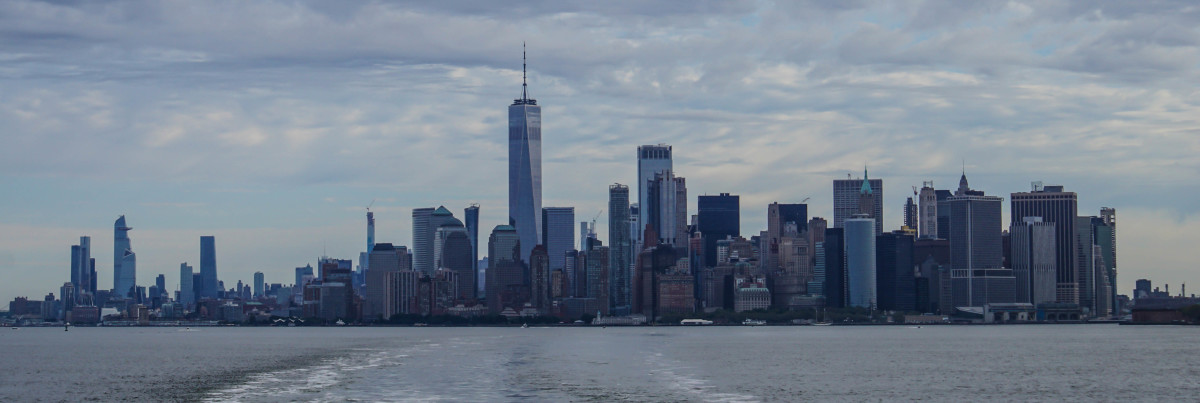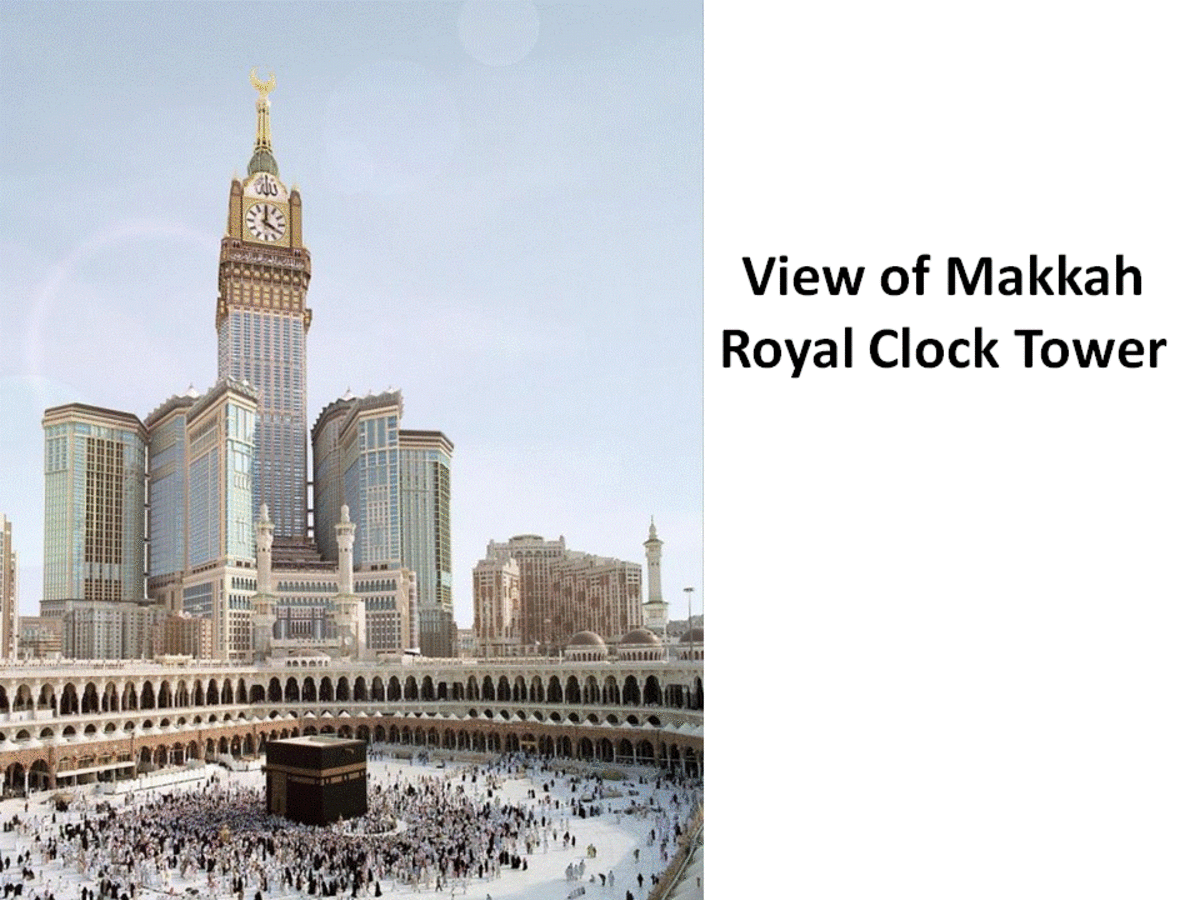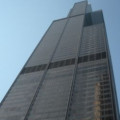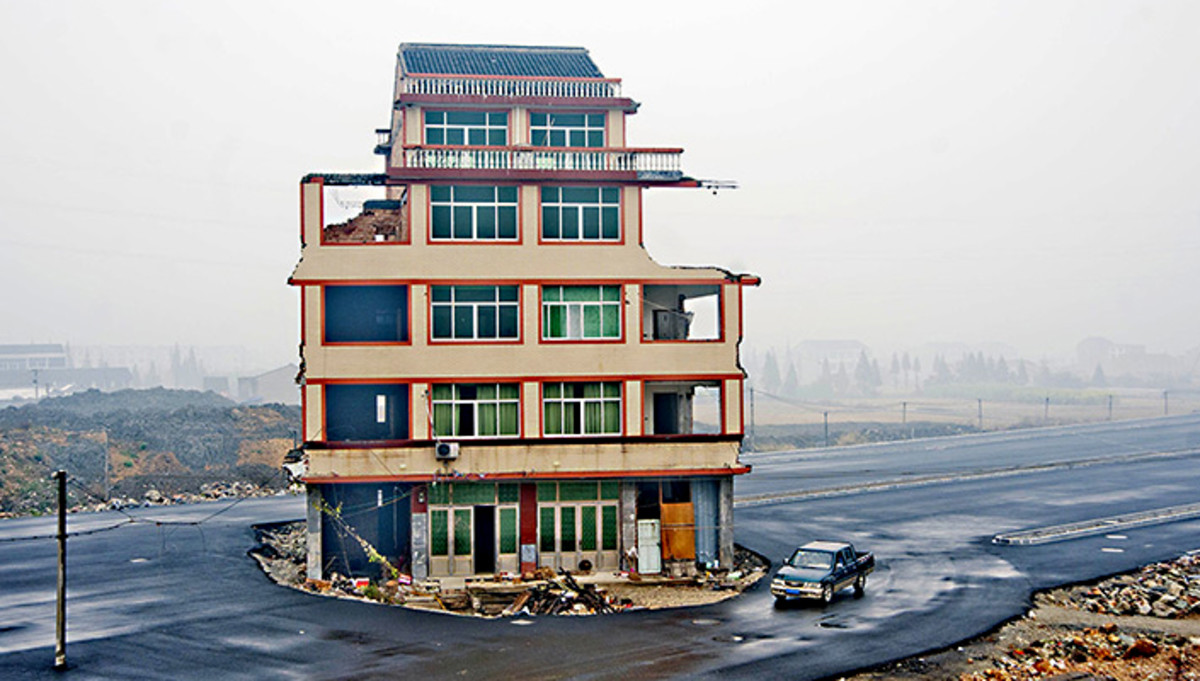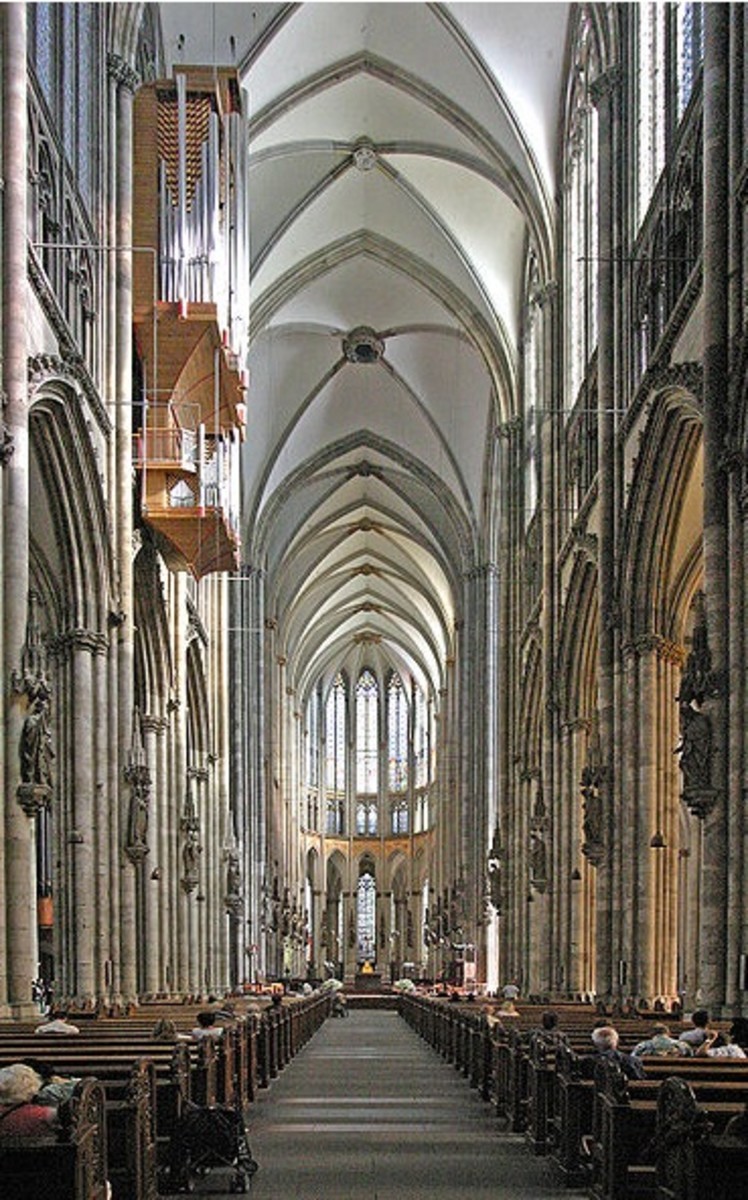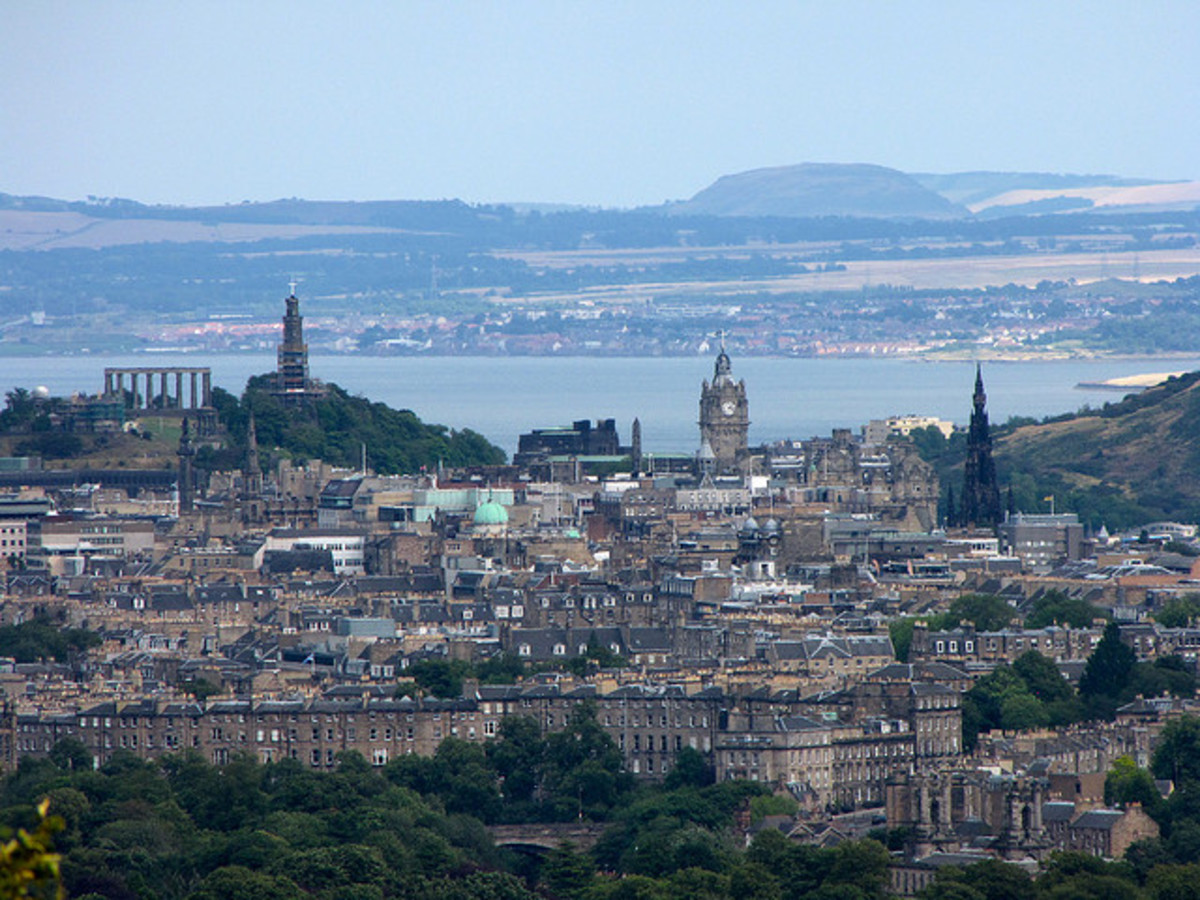Kingdom Tower - The World's Tallest Skyscraper
Tower of Babel
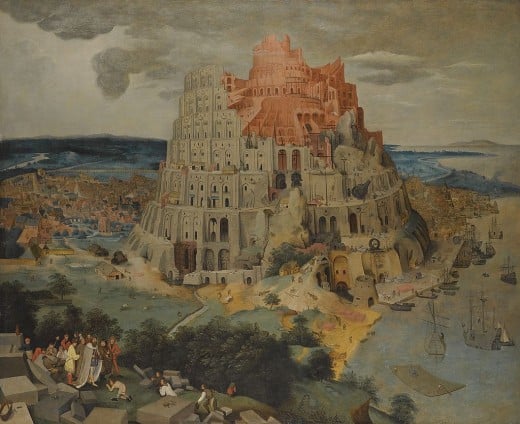
Ancient Beginnings of Tall Buildings
Mankind seems to have had a desire to build tall structures since the earliest beginnings. "Come, let us build ourselves a city and a tower whose top will reach into heaven and let us make for ourselves a name" (Genesis 11:4) they said in the valley of Shinar in ancient Babel. Rather than being fueled by high property prices as with many of today's skyscrapers, the construction of the tower of Babel seems to have been motivated mainly by man's pride. It is unknown what height the project reached before God interrupted construction efforts by confusing man's common language, but, in any case, the height of ancient structures pales compared to our modern buildings. The Giza Pyramid in Egypt, admittedly, reached the considerable height of 147 m, but it offered very few living quarters and was based on a design definitely unsuitable to reach out for much further heights.
A Short History of Skyscrapers
The construction of real skyscrapers was only made possible by technological advances in building materials and the design of the steel structure. Further inventions like the steam powered lift by Elish Graves Otis in 1852 were also essential to make living in tall buildings viable. The modern era of tall buildings began in the late 19th century with the Home Insurance Building in Chicago (built 1884-85), which represented the first "tall" building according to a new steel-structure design. Although it just reached the modest height of 43 m, it inaugurated an entire new era in construction. The first real skyscraper, on the other hand, is generally considered to be The Woolworth Building in New York from 1913. Contrary to the former, the beautiful 241 m tall structure can still be admired by today's visitors.
For long the competition for the tallest building in the world was contested between two cities: New York and Chicago. While New York dominated the skies with the Empire State Building from 1931 (and briefly the World Trade Center from 1971), Chicago gained the upper hand in 1974 with the completion of its Sears Tower (today Willow Tower). Then in 1997 the dominion past from the American to the Asian continent with the inauguration of the Petronas Towers in Kuala Lumpur, Malaysia. From there only the sky seems to have marked the limit in an ever faster race for the tallest building, now contested between the Far East and the Arabian Peninsula. While the inauguration of the Burj Khalifa (Dubai) in 2009 seemed to have set an entire new standard with a breathtaking 828 m, a project for an even taller structure is already on the way: The Kingdom Tower in Saudi Arabia.
Skyscrapers' Heights by Comparison
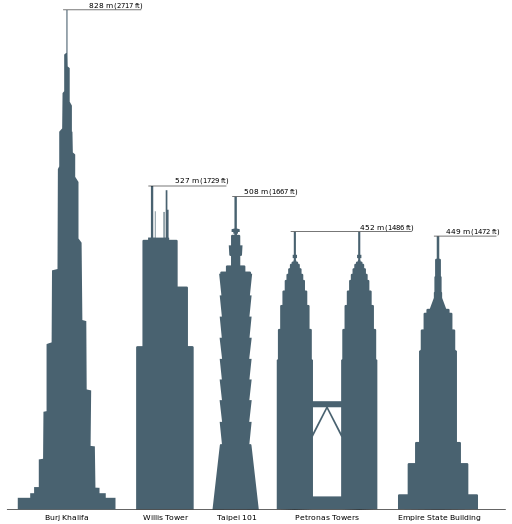
- Council on Tall Buildings and Urban Habitat
Council on Tall Buildings and Urban Habitat
The Kingdom Tower Will Breach the 1 KM Mark
The Kingdom Tower is supposed to become the tallest skyscraper in the world, breaching for the first time ever the 1 km mark (the exact height is unknown). The landmark tower will raise near the port city of Jeddah, Saudia Arabia, overlooking the Red Sea. The supertall structure is already approved for construction, which is supposed to start in early 2013 (the only project ever to be approved for construction with a height surpassing the 1000 m mark). At an estimated overall cost of 1,3 billion USD the project is relatively efficient, compared to other constructions such as the Burj Khalifa. As with the latter, the Kingdom Tower is expected to further economic growth in the surrounding area, while hopefully becoming profitable itself. If everything goes according to plan, the construction would last about 5 years and inauguration take place in 2018. As the leader of the project is Saudi Arabian Prince Al-Waleed bin Talal, chairman of the Kingdom Holding Company, the project will likely not been burdened by financial concerns. Once finished the building will be a spectacular landmark at the gateway into the Muslim Holy City of Mecca.
In the meantime China is already thinking of a 300-floor-building with a height of over 1.200 m, to be built within 15 years time. Yet the project is at too early a stage, to tell whether it will ever go beyond the planning status, especially considering latest economic trends.
As of 2013, the primacy for the tallest building in the world seems to have moved from the American to the Asian continent for good. Yet in a sense the former has not entirely lost its dominance: the main architect of the Kingdom Tower is a certain Adrian Smith whose company is based in ... Chicago.
List of the World's Tallest Buildings
Below is a list of the tallest buildings in the world, including their respective location, height and year of inauguration - updated as of January, 2013 (height including antenna):
1. Burj Khalifa, Dubai (UAE) - 828 m (2009)
2. Willis (Sears) Tower, Chicago (USA) - 527 m (1974)
3. Taipei Financial Centre (Taipei 101), Taipei (Taiwan) - 508 m (2004)
4. Shanghai World Financial Centre, Shanghai (China) - 492 m (2008)
5. International Commerce Centre, Hongkong (China) - 484 m (2010)
6. John Hancock Center, Chicago (USA) - 457 m (1969)
7. Petronas Towers, Kuala Lumpur (Malaysia) - 452 m (1999)
8. Empire State Building, New York (USA) - 443 m (1931)
9. Trump International Tower, Chicago (USA) - 423 m (2009)
10. Jin Mao Tower, Shanghai (China) - 421 m (1998)
Kingdom Tower, Jeddah, Saudi Arabia
This content is accurate and true to the best of the author’s knowledge and is not meant to substitute for formal and individualized advice from a qualified professional.
© 2013 Marco Pompili

